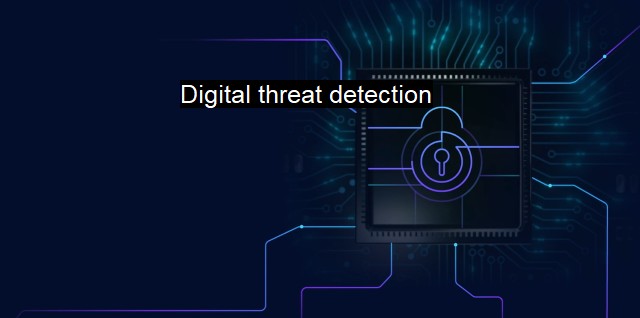What is Digital threat detection?
The Importance of Digital Threat Detection in Cybersecurity and Antivirus: Understanding Types of Digital Threats and Strategies for Protection
Digital threat detection refers to an extensive spectrum of techniques, solutions, and strategies leveraged to identify, monitor, and mitigate potential digital threats within a digital ecosystem, a pivotal area within cybersecurity. The digital environment is incredibly dynamic, brimming with countless digital platforms, devices, and networks, facilitating seamless communication and enhancing business, social interaction, and information exchange globally. these technologically advanced avenues open a pandora box of vulnerabilities and threats, hence the critical necessity of robust digital threat detection.In the simplest term, a digital threat is any potential digital action capable of causing substantial harm to a digital ecosystem, oftentimes a computer network or system. This harm may be categorized into three key facets: unauthorized access, compromising system integrity, and data theft. These threats may originate from diverse sources, including malicious software (malware), hacking attempt, Distributed Denial-of-Service (DDoS) attacks, Phishing attempt, ransomware attack, spear phishing, among others.
Cybersecurity, thus, emphasizes identifying these threats preemptively through digital threat detection. Antivirus software plays a vital role in detecting such digital threats, using complex algorithms and vast databases of known virus threats to detect irregularities in the system's functioning, seen typically during a malware or virus attack.
Dealing and maintaining an effective antivirus software not just means having a "bouncer" for your digital assets’ safety, but it’s also responsible for constant vigil, scanning for and deterring debilitating threats. Technological advancements have allowed for artificial intelligence and machine learning to be incorporated into digital threat detection, prime components driving the effectiveness of antivirus software. They foster learning from previous patterns of threats, hence not only ensuring immediate threat detection but also predicting future potential threat instances.
Digital threat detection includes both internal and external monitoring. Internal monitoring involves maintaining an active watch over entire network activities to detect anomalies within a system, indicating potential threats. External monitoring refers to an analysis and response against threats from a wide array of external sources, including the dark web, hacking groups, even social media platforms.
Modern context-sensitive detection techniques, employed by advanced antivirus software, focus not just at the signature level, similar to traditional antivirus tools; instead, they examine how programs and apps behave. If software or an app begins to perform suspicious activity, such as trying to access files it shouldn't, taking significant control over a system, or launching autonomously, these modern detection tools raise a red-flag about a potential threat.
Indeed, digital threat detection does not stop at recognizing the potential threats and anomalies. A considerable part of it extends to dealing with these threats effectively once identified. Some of these tools can automatically isolate or delete files or software, considered possible threats, referred generally as containment. Others may concern themselves with alerting the right channels within a network about the possibility of a breach, leading to immediate measures taken to safeguard the network.
The environment of cybersecurity is turbulent and ever-evolving. As organizations, businesses or even individuals become more ambitious in their digital presence, growing their infrastructure and scope of operations, digital threat vectors also evolve simultaneously. the staggering costs of a data breach – both monetary and reputational – impose additional pressure to stay a step ahead of potential threats.
Therefore, digital threat detection has transgressed the realm of being optional. It is now a must-have component for any digital ecosystem, irrespective of the size or scope. With cutting-edge antivirus software, machine learning models, AI-empowered solutions, and a strategic approach towards threat detection, organizations can build resilient networks and iron-clad environment capable of more than just reacting to threats but predicting, addressing and mitigating those proficiently in a proactive manner. It is clear that this realm of cybersecurity fosters the indispensable layer of defence against the looming cyber threats of the digital world.

Digital threat detection FAQs
What is digital threat detection?
Digital threat detection is the process of identifying and mitigating potential cyber threats to a system or network. It involves using various tools and techniques to monitor activity and detect any suspicious or malicious behavior.What are some common digital threats that are detected using this technology?
Some examples of digital threats that can be detected using digital threat detection technology include malware, phishing attacks, ransomware, and other types of cyber threats that can compromise the security of a system or network.How does digital threat detection work?
Digital threat detection uses a combination of technology and human analysis to identify and respond to potential threats. This includes advanced algorithms that can analyze patterns of behavior on a network or system, as well as the expertise of cybersecurity professionals who can interpret the data and respond accordingly.Why is digital threat detection important for businesses and organizations?
Digital threat detection is critical for businesses and organizations because it helps to protect sensitive information and prevent costly security breaches. By detecting and responding to potential threats in real-time, organizations can minimize the risk of data loss or reputational damage that can result from a successful cyber attack.| | A | | | B | | | C | | | D | | | E | | | F | | | G | | | H | | | I | | | J | | | K | | | L | | | M | |
| | N | | | O | | | P | | | Q | | | R | | | S | | | T | | | U | | | V | | | W | | | X | | | Y | | | Z | |
| | 1 | | | 2 | | | 3 | | | 4 | | | 7 | | | 8 | | |||||||